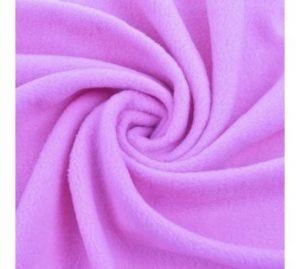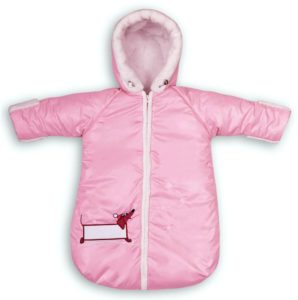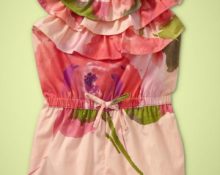When a newborn baby appears in the house, you immediately want to surround him with the most beautiful and best things, including dressing him in comfortable overalls, sewn with your own hands with love.
 A jumpsuit with a hood will be useful for children born in the autumn-winter period. Unlike an envelope, it does not restrict the baby’s movements, it is warm and pleasant to the body. Nothing rises to the top and does not interfere with the movement of arms and legs, the back is well closed, since the product is solid, so you don’t have to be afraid that the baby will catch a cold.
A jumpsuit with a hood will be useful for children born in the autumn-winter period. Unlike an envelope, it does not restrict the baby’s movements, it is warm and pleasant to the body. Nothing rises to the top and does not interfere with the movement of arms and legs, the back is well closed, since the product is solid, so you don’t have to be afraid that the baby will catch a cold.
Patterns come in a wide variety, below are basic and understandable patterns for sewing overalls for newborns with your own hands, which even a beginner in sewing can handle.
Choosing materials for overalls
You need to choose fabric for sewing based on the season. If you plan to sew a warm winter overall, then it is better to choose capiton, velor, or fleece. Suitable for filling: padding polyester, sheepskin, synthetic down, and for lining: fleece, velsoft.
 These fabrics are very pleasant to the body and have a natural composition. The child will be comfortable in such attire during a walk.
These fabrics are very pleasant to the body and have a natural composition. The child will be comfortable in such attire during a walk.
For a light slip, natural cotton with elastane, cambric, and linen are suitable. This jumpsuit does not restrict movement and stretches well.
For the hood, you need to purchase an elastic band with a lock; it will tighten around the baby’s face and will not blow through. Another accessory required is a large zipper; it is the most practical and easy to use.
Measurements for the pattern
For a template for making overalls, you need to measure the height of your child, always with a margin, since the child grows very quickly in the first year of life.
If a baby is born 54 cm tall, then in 3–4 months he will gain an average of 11 cm.
Therefore, in order to have enough clothes for a season for a baby from 0 to 3 months, you can take a size of 65 cm for growth as a basis. For a child from 3 to 6 months you need to add another 6 cm.
For insulated overalls, measurements are taken in the same way, but with an allowance of about 2 cm for additional insulation.
Making a pattern on paper

The template for the future jumpsuit with a hood is prepared as follows:
- On a large sheet of thick paper, you need to draw a pattern for the front and back of the overalls.
- On one part of the template there will be a future fold of the product, and on the other it is necessary to draw an armhole.
- Next, along the downward fold line, measure 51 cm for the shelf and 55 cm for the back, to the side, 21 cm and 23 cm, respectively. This is the future bag for the baby’s legs.
- To pattern the sleeve, mark the width of our sleeve at the wrist, approximately 24 cm. Next, from the cutting point of our pattern, you need to go down 12 cm and draw a straight line, retreating 16 cm from the fold - this is the widest part of the sleeve.
- Now from the other part of the fold you need to go down 16 cm and measure 20 cm down. The top mark must coincide with the line connecting the sleeve to the armhole.
- Afterwards, you need to mark the location of the neck of the back and the front of the product according to the diagram.
- To pattern the hood, you need to take a separate sheet of paper. Draw on it a rectangle with a height of 26 cm and a width of 16 cm and the middle part of the hood measuring 15 cm by 52 cm according to the diagram.
- It is necessary to bevel 5 cm inward along the side part, and lower it by 7 cm along the front section and connect it with a straight line.
- In order for the hood pattern to fit well with the rest of the template, it is necessary to adjust the cut of the neck and the bottom of our hood.
Cutting materials for overalls

Transferring the pattern to fabric
Correct placement of the fabric will ensure good cutting of the product. Necessary actions:
- Place the selected fabric on a flat floor or table. The pattern should not be placed on a soft surface, otherwise all the lines will be bent.
- Carefully distribute all the material on a sheet of paper to avoid running out of fabric. If you don’t have enough material, you can save it by making a jumpsuit belt from existing pieces of fabric sewn together; pockets and a hood can be made from large scraps.
- To prevent the fabric from moving, press it with something quite heavy, for example, a book.
- You can trace the part according to the template with a bar of soap if the fabric is dark.
- To transfer the part template onto white or light-colored fabric, you can use carbon paper; it is placed between the paper with the pattern and the wrong side of the fabric, ink side down.
- For cambric, transferring the template onto the canvas is best done using another method. It is necessary to attach the sketch to the fabric and sew a dotted line along the borders of the part using a hand basting.
Cutting fabric for sewing overalls
After you have transferred the template to the canvas, you must carefully cut them out with a seam allowance of 2 cm. You will get:
- back;
- front part, consisting of two halves;
- 2 sleeves;
- cuffs;
- hood;
- straps for fasteners, they can be immediately glued with non-woven fabric from the inside out.
This completes the cutting and you can start sewing the overalls.
Sewing overalls
Sewing parts of the product is not difficult if you have a sewing machine. Since we have a winter version with a hood, it turns out that there are two blanks each from the main fabric and the lining.
Stages of working on a sewing machine

- Manually baste the padding polyester and raincoat fabric, you get two layers, we do this so that the material does not move out when stitching.
- All protruding synthetic padding must be carefully trimmed with scissors.
- Sew strips of fleece fabric to the front part where the zipper of the product will go. It is also necessary to sew fleece to the edges of the sides of the front of the overalls from the inside.
- Connect the sides of the front of the overalls with the central one, but slightly below the level of the fastener.
- Next, we move on to the back of the product. We sew all the parts together and sew them to the front, with the exception of the sides, since they need to be sewn together with the sleeves of the overalls.
- Sew the sleeves to the back and front of the garment, be sure to carefully sew the side seams.
- Baste the lining and body of the hood together.
- Connect the stitched hood and the front side of the product and sew it, carefully insert the zipper in the front of the product and sew it on.
Product finishing
To finish the product you need:
- Sew a drawstring onto the sleeves and legs of the overalls, stretch the elastic;
- You can additionally sew Velcro tape in different places of the overalls for convenience.It is best to make two ribbons at the top and two at the bottom on the sleeves and pants to securely attach the product to the baby’s arms and legs.
- The hood can be trimmed with fur; it is necessary to stitch it along the edging to the part of the product.

The overalls for a newborn baby are completely ready! Now your baby is not afraid of the cold, he will be warmed by a warm jumpsuit made with love.


 0
0





